


 “My experience at AIU cannot
be overemphasis. Students
can choose courses that best suit their
career path, which is the best experience
I had while studying at AIU. I had
to choose the best courses that met my
individual and organizational vision and
goals. Other universities never allow me
to choose my curriculum.
The beauty of choosing my own
DBA curriculum is that I choose those
courses that will add more value to
myself and those around me and helps
me to meet my organizational goals.
Furthermore, the flexibility of my DBA
program was an experience I will never
forget, as it gave me the time to do
as much research as possible before I
turned in my assignments. The reading
list or sources to source materials for
the various curriculum was so vast that
it only deepened my research knowledge
and career pathway. It is obvious
that studying at Atlantic International
University was the most excellent decision
I have ever made in my life, and
I have learned a lot even though I was
working. The support and constructive
feedback from my academic tutor
or adviser were outstanding; these are experiences I will never forget. I want
to thank you for being part of my DBA
dream. I equally wish to give special
thanks to the university for the financial
support that helped me achieve this
dream because, without the scholarship,
It would not have been possible to
pay my tuition fees and meet another
cost of my DBA program. Another good
experience was the availability of support
24/7 to help students meet their
full potential. Being a student at AIU is
not just about obtaining a degree but a
whole new life experience that harnesses
my development, especially being
disciplined and improving knowledge,
attitude, responsibilities, and standard
skills in business management and
leadership and, above all, time management.
My experience with AIU will
remain with me all my life as I embrace
the future with my new qualification.
“My experience at AIU cannot
be overemphasis. Students
can choose courses that best suit their
career path, which is the best experience
I had while studying at AIU. I had
to choose the best courses that met my
individual and organizational vision and
goals. Other universities never allow me
to choose my curriculum.
The beauty of choosing my own
DBA curriculum is that I choose those
courses that will add more value to
myself and those around me and helps
me to meet my organizational goals.
Furthermore, the flexibility of my DBA
program was an experience I will never
forget, as it gave me the time to do
as much research as possible before I
turned in my assignments. The reading
list or sources to source materials for
the various curriculum was so vast that
it only deepened my research knowledge
and career pathway. It is obvious
that studying at Atlantic International
University was the most excellent decision
I have ever made in my life, and
I have learned a lot even though I was
working. The support and constructive
feedback from my academic tutor
or adviser were outstanding; these are experiences I will never forget. I want
to thank you for being part of my DBA
dream. I equally wish to give special
thanks to the university for the financial
support that helped me achieve this
dream because, without the scholarship,
It would not have been possible to
pay my tuition fees and meet another
cost of my DBA program. Another good
experience was the availability of support
24/7 to help students meet their
full potential. Being a student at AIU is
not just about obtaining a degree but a
whole new life experience that harnesses
my development, especially being
disciplined and improving knowledge,
attitude, responsibilities, and standard
skills in business management and
leadership and, above all, time management.
My experience with AIU will
remain with me all my life as I embrace
the future with my new qualification.
 “Graduating with an online degree
was truly a positive and transformative
experience for me. As I reflect
on my journey, I am filled with a sense
of pride and accomplishment. Here’s
why my online degree graduation was such a remarkable and uplifting moment.
One of the greatest advantages
of pursuing an online degree was the
flexibility it offered. Being able to study
and complete coursework from the
comfort of my own home, at a pace that
suited me, allowed me to balance my
education with other commitments in
my life.
Whether it was a full-time job, family
responsibilities, or personal interests,
the online format provided the convenience
I needed to make my education
a reality.Through AIU, I had the
opportunity to connect and collaborate
with a diverse group of students from
all around the world. Interacting with
individuals from different cultures,
backgrounds, and professional experiences
enriched my learning journey.
The online platform facilitated engaging
discussions and meaningful exchanges
of ideas, expanding my horizons and
broadening my perspective on various
subjects. Contrary to the misconception
that online education lacks interaction,
my experience was quite the
opposite. The online learning platform
I used incorporated various interactive
tools, such as discussion boards, video
conferences, and multimedia resources.
These features not only facilitated active
participation but also encouraged
critical thinking, problem-solving, and
effective communication. I was able to
engage with professors and classmates
in a collaborative manner, fostering
a vibrant learning community.Pursuing
an online degree with Atlantic
International University requires self-motivation and discipline. As a
result, I developed invaluable skills in
time management, organization, and
self-direction. By setting personal goals
and adhering to a structured study plan,
I honed my ability to stay focused and
meet deadlines. These qualities have
not only benefited me academically but
also translated into my personal and
professional life, making me a more
self-reliant and efficient individual.
Graduating with an online degree allowed
me to become well-versed in
various technological tools and platforms.
I gained proficiency in online
learning management systems, virtual
collaboration tools, and multimedia
resources. These technical skills are
highly relevant in today’s digital age,
providing me with a competitive edge
in the job market and enhancing my
overall digital literacy. Navigating the
challenges and triumphs of online
education has undeniably contributed to
my personal growth and adaptability.
It required resilience, perseverance,
and the ability to adapt to new situations.
Overcoming obstacles such as
time zone differences, and technical
difficulties, and managing a virtual
study routine equipped me with a sense
of confidence and resilience that will
serve me well in all aspects of life.By
graduating with an online degree, I not
only obtained the knowledge and skills
necessary for my desired career but also
experienced personal growth and development.
The positive experience of …
Read full text:
“Graduating with an online degree
was truly a positive and transformative
experience for me. As I reflect
on my journey, I am filled with a sense
of pride and accomplishment. Here’s
why my online degree graduation was such a remarkable and uplifting moment.
One of the greatest advantages
of pursuing an online degree was the
flexibility it offered. Being able to study
and complete coursework from the
comfort of my own home, at a pace that
suited me, allowed me to balance my
education with other commitments in
my life.
Whether it was a full-time job, family
responsibilities, or personal interests,
the online format provided the convenience
I needed to make my education
a reality.Through AIU, I had the
opportunity to connect and collaborate
with a diverse group of students from
all around the world. Interacting with
individuals from different cultures,
backgrounds, and professional experiences
enriched my learning journey.
The online platform facilitated engaging
discussions and meaningful exchanges
of ideas, expanding my horizons and
broadening my perspective on various
subjects. Contrary to the misconception
that online education lacks interaction,
my experience was quite the
opposite. The online learning platform
I used incorporated various interactive
tools, such as discussion boards, video
conferences, and multimedia resources.
These features not only facilitated active
participation but also encouraged
critical thinking, problem-solving, and
effective communication. I was able to
engage with professors and classmates
in a collaborative manner, fostering
a vibrant learning community.Pursuing
an online degree with Atlantic
International University requires self-motivation and discipline. As a
result, I developed invaluable skills in
time management, organization, and
self-direction. By setting personal goals
and adhering to a structured study plan,
I honed my ability to stay focused and
meet deadlines. These qualities have
not only benefited me academically but
also translated into my personal and
professional life, making me a more
self-reliant and efficient individual.
Graduating with an online degree allowed
me to become well-versed in
various technological tools and platforms.
I gained proficiency in online
learning management systems, virtual
collaboration tools, and multimedia
resources. These technical skills are
highly relevant in today’s digital age,
providing me with a competitive edge
in the job market and enhancing my
overall digital literacy. Navigating the
challenges and triumphs of online
education has undeniably contributed to
my personal growth and adaptability.
It required resilience, perseverance,
and the ability to adapt to new situations.
Overcoming obstacles such as
time zone differences, and technical
difficulties, and managing a virtual
study routine equipped me with a sense
of confidence and resilience that will
serve me well in all aspects of life.By
graduating with an online degree, I not
only obtained the knowledge and skills
necessary for my desired career but also
experienced personal growth and development.
The positive experience of …
Read full text:

| Filipe Daniel Pango Quinda Bachelor of Business Economics Business Economics Angola |
Elliot Chodziwadziwa Luka Doctor of Accounting and Finance Accounting and Finance Botswana |
Kamila De Oliveira Barros Bachelor of Science Counseling Psychology Brazil |
Ninteretse Diomede Doctor of Organizational Management Leadership and Management Burundi |
Swaleh Namusasi Abdallah Doctor of Philosop hy Business Management Canada |
Jead Antuelas Advincula Doctor of Philosop hy Maritime Affairs Canada |
| William Ramiro Duarte Garcia Bachelor of Legal Studies Legal Studies Colombia |
Ivanna Alejandra Pertuz Serna Master of Healthcare Administration Healthcare Administration Colombia |
Patrick Girukwayo Semahane Doctor of Science Leadership and Strategic Planning Congo (DRC ) |
Kattia Beatriz Zúñiga Acosta Doctor of Finance Finance Costa Rica |
Eridania Méndez Céspedes Master of Natural Sciences Biology Dominican Republic |
Salah El Din I. M. Salah El Din Fayek Bachelor of Marketing Marketing Egypt |
| Priscila Nena Panadés Master of Education Pedagogical Sciences Equatorial Guinea |
Abubacarr Drammeh Bachelor of Science Quantity Surveying Gambia |
Abdou Bekai Darboe Master of Science Healthcare Administration Gambia |
Dylan Kwablah Hewlett Doctor of Science IT Project Management Ghana |
Michael Gogovi Bachelor of Interior Design Residential Design Ghana |
Sofía Pinto Gordon Bachelor of Science Psychology Guatemala |
| Yvon Janvier Doctor of Arts Humanities and Human Rights Haiti |
Sunilda Sarahi Gómez Zuniga Doctor of Science Psychology Honduras |
Phillip Scotwell McPherson Doctor of Science Psychology Jamaica |
Novel F. Jackson Doctor of Business Administration Accounting Jamaica |
Sanaa Matragi Bachelor of Arts International Relations Leba non |
Stephen Blamo Kofa Master of Finance and Banking Finance and Banking Liberia |
| Miguel Ángel Rodríguez Flores Doctor of Science Mechanical Engineering Mexico |
Francisco Javier Espinosa Rangel Bachelor of Marketing Marketing and Business Mexico |
Lorenza Cecilia Corral Lopez Negrete Master of Science Psychotherapy for Couples México |
Sherjung Bahadur Chand Post-Doctorate of Economics Economics Nepa l |
Chimdindu Kenechukwu Nwashili Bachelor of Arts International Relations Nigeria |
Esther Ebere Chukwudi-Okoli Doctor of Psychology Counseling Psychology Nigeria |
| Mack, Barnabas Doctor of Philosop hy Industrial Engineering Nigeria |
Olanrewaju Adesina Adebara Doctor of Philosop hy Project Management Nigeria |
Wahab Mutiu Olaide Bachelor of Science Computer Science Niger |
Olumayowa Olufemi Olurishe Bachelor of Science Architecture Nigeria |
Ahmed Kasim Basha Bachelor of Science Banking and Finance Nigeria |
Okoroma Chioma Happiness Doctor of Management Strategic Procurement Management Nigeria |
| Juan Carlos Baca Galiano Bachelor of Science Civil Engineering Peru |
Gerrit Jacobus de Villiers Bachelor of Education Education Poland |
Eugenie Francis Doctor of Legal Studies Legal Studies Saint Lucia |
Emmanuel Lubajo Natana Dobolo Master of Science Electrical Engineering South Sudan |
Dudu Phuphutha Hlophe Doctor of Education Early Childhood Education and Development Swaziland |
Dexter Jermaine Parker Doctor of Science Human Resource Management Turks and Caicos |
| Vincent Ahimbisibwe Master of Science Urban Management Uganda |
Kata Wafula Erineo Paul Doctor of Education Educational Management Uganda |
Franklin Nsosong Tongwa Doctor of Science Civil Engineering and Construction Mgmt. United Kingdom |
Irene Yirenkyiwa Ansah Doctor of Psychology Clinical Psychology US A |
Daniela Maravankin Master of Education Jewish and Hebrew Studies US A |
Adekunle Umar Modile Doctor of Philosop hy International Relations US A |
| Carol J. Suzal Aguilar Master of Science Psychology US A |
Ana Maria Vicuña Palacios Master of Business Administration Human Resources Management US A |
||||


We are in a society that has
globalized trade and attempts
to globalize culture.
From the beginning of the
capitalist mode of production,
society has been oriented towards
the production of goods.
Today we ask ourselves,
where are we going?
We are living in a society
where everything is made up of
marketing.
Where has the life of
human beings been?
Where has the life of
the flora gone?
Where has the life of
the fauna gone?
Where has life on our
planet gone?
Given the world in which we are living, the United Nations
Organization —UN— together
with the United Nations Organization
for Culture, Science
and Education —UNESCO, integrated
organizations for peace
and development, created after World War II, they structured
programs to stop the way of
development in which we live.
We are forgetting to be
human beings.
We are forgetting to be
men.
We are forgetting to be
women.
Where has the realization
of our skills left?
Where has the realization
of ourselves as human
beings left?
The Sustainable Development
Goals were determined
at a United Nations Summit by
world leaders to end poverty,
reduce inequality and protect
the planet against climate
change. They entered into force
on January 1, 2016. They arise
from the Millennium Development
Goals. Take a look at Fig.
2 (Millennium Development Goals).
The Millennium Development
Goals were 8 goals
proposed by the 193 member
countries of the UN in order to generate human development,
which would be achieved by
2015. They were made in the
year 2000.
If we look at the Sustainable
Development Goals and
the Millennium Development
Goals, they begin with the
same purpose: Extreme Poverty.
The serious question: Why,
if marketing develops more
and more, is poverty the first
objective in the two models for
development?
What is happening to
humans?
We listen and listen about
the empowerment of women,
and we forget about what happens
with men.
We are witnessing the deterioration
of the quality of life.
Everywhere there are protests,
marches because few are
comfortable with the governments
and the quality of life
they have.
In the Sustainable Development
Goals in #4, Quality
Education, UNESCO proposes
that the study programs be
reviewed.
In many school systems in
many countries, the ethics
that can be brought to life
and the customs to educate in
what the customs of the cultures
are and go on analyzing
the way of life that we lead:
only to produce goods.
The social sciences, together
with the knowledge of them, have less importance in the
study programs and in the development
of the same because
they don’t produce goods, such
as the so-called hard sciences:
Physics, Biology and others.
“…a world where all countries
adopt an approach that
ensures not only that girls,
boys, women and men gain access
to and succeed in different
levels of education, but that
they acquire the same skills
in and through education.”
UNESCO- From access to empowerment:
UNESCO strategy for gender equality in
and through education 2019-2025.
UNESCO 2019, p. 4 https://unesdoc.
unesco.org/ark:/48223/pf0000371127
UNESCO establishes equality
of boys, girls, women and
men because you only hear
about the equality of women
in relation to men. Boys and
men also have, to reach levels
of development; it is not about
men having the model, no,
men also need to achieve levels
of well-being.
“The full power of education
needs to be used to change
unequal power relations, social
norms, discriminatory practices
and belief systems that
underpin gender inequality and
exclusion in society.” UNESCO
-From access to empowerment: UNESCO
strategy for gender equality in and
through education 2019-2025. UNESCO
2019, p. 4 https://unesdoc.unesco.org/
ark:/48223/pf0000371127
What UNESCO says in the previous paragraph is very
important because in the life
of human beings the following
happens:
Everything goes into producing
and producing goods.
Few say that there is inequality
between men themselves,
they think that it’s only
between men and women.
Men are educated that they
shouldn’t show emotions: men
don’t cry. That’s what they say
to children, that’s a thing for
girls, for women.
Men are the providers of the
goods that the family needs.
Depending on the fact that
they are the providers of the
family, it is organized in that the women are the ones who
take care of the children, take
care of the organization of the
home: they buy the groceries
that the women say, they
wash the clothes when the
women they say, it is cleaned
when the women say, and the
women cook and also do the
previous tasks.
Men are the ones who study
the longest because they will
be the providers.
From the culture, the previous
separation is made when
both men and women should
be educated in carrying out the
functions of life.
You cook today, I cook
tomorrow. We are witnesses that when
a man has to keep a child after
5 minutes, he tells the woman:
take your child because I don’t
know what he wants; I do not
know what happens.
Men live outside of being
human beings and women live
carrying many tasks as a result
of the culture they have.
What is called “women’s
empowerment” also occurs:
studying at a prestigious
university to find a partner
with good resources and
dedicating yourself to doing
nothing. Many parents, at the
cost of many efforts, put their
daughters to study in expensive
schools in order to get out of the problem of what the
daughter must do to achieve
her empowerment.
We have, to make cultural
changes because a man is
not happy, marginalized
from emotions, marginalized
from washing a dish,
marginalized from being able
to fix his clothes, marginalized
from raising children
and turned into the provider
and in which he should not
feel emotions.
The only thing we have, to
marginalize a man from is
getting pregnant and giving
birth to a baby.
We have a lot to learn so
that the lives of men, women,
boys and girls become personal
fulfillment. It is thought
that when men are assigned
to be providers of the family’s
goods, they achieve their
well-being.
Life must be for fulfillment
as human beings with
the abilities that each human
being has as part of their
biological heritage and as part
of their culture, but culture
understood as a range of
opportunities.
We know that we must
educate ourselves throughout
life for what the change we
need as human beings, as a
society, must be: learning to
be the new human being that
we have, to be.
Men can’t have the sole objective of their lives to be
providers; they must learn to
enjoy all activities, and men
and women obtain the necessary
goods for everyone in the
family.
Women have, to educate
themselves, for life in learning
to provide and teach men
to do the other tasks, that a
family needs.
Children must be educated
that they are human beings
with all the shortcomings and
benefits that every human being
has. Girls are not born to
serve them both must be educated
to do the necessary tasks
for any human being.
Parents must educate girls
that they have, to live for
themselves and not to see
who gives them the resources
they need.
Men, Women, Boys and Girls,
are born to lead a full life,
where nature and planet Earth
contribute to that goal instead
of living in the destruction of
everything as we do today.
You are studying at Atlantic
International University -AIUyou
have the opportunity to do
it growing as a human being in
the civilization we have and in
which we should build.
When the pandemic was,
UNESCO created a program to
solve the closure of schools as
much as possible; This program
is becoming the digital
support that Education needs to be Quality and Lifelong.
In order to achieve the
objectives of Quality Education,
UNESCO in the face of the
closure of schools due to the
Covid-19 pandemic, created
the UNESCO World Coalition for
Education in 2020. The activities
focused on the following
objectives:
1. World Academy of Skills
2. World Campus for Teachers
3. World House of Learning
4. Gender
These programs have passed
to The Transformation of Education. During the September
2022 Summit, the
foundations for the Digital
Transformation Collaboration
were established. DTCs. Today
we are in Artificial Intelligence
so digital transformation
is necessary. Human beings:
There is no other remedy
than to change the
course for one of growth,
of development of all the
potentials with which we
were born to live satisfied
with who we are.
BIBLIOGRAPHY. UNESCO. Coalición Mundial para la Educación de
la UNESCO. Retrieved from: https://www.unesco.org/es/global-educationcoalition
| UNESCO. Del acceso al empoderamiento: estrategia de la
UNESCO para la igualdad de género en y a través de la educación
2019-2025. UNESCO 2019. Retrieved from: https://unesdoc.unesco.org/
ark:/48223/pf0000371127 | ONU. Objetivos de Desarrollo Sostenible.
Retrieved from: https://www.un.org/es/impacto-acad%C3%A9mico/page/
objetivos-de-desarrollo-sostenible

Review of literature
Today, Rabari are very much
adaptive in nature to accept
the social changes and
environmental changes, they
are not emotional about their
tradition, and they believe in
betterment and move ahead with practical decision. They
understand the fashion and
current trends and like to
follow it hence they broaden
their thinking and changed
and adapted new environment
by changing the selection of
fabrics for garments from traditional to contemporary,
accessories, decoration of
garments, veils that is screen
or digital printed on polyester
material, synthetic mufflers,
chappals made of rubber etc.
In late twentieth century
most of India and part of Gujarat-
Kutch has seen increasing
population, cultivation and
deforestation with less grazing
land, it is challenging to keep
large herds, hence Rabari have
started keeping sheep and
goats instead of camel, they
stopped herding in family
groups and started herding in
small individual group. In last
five decades there is a rapid
social changes took place, to
match up with this Rabari
community of Kutch have
adopted changes in their life
and in embroidery at very fast
pace. (Frater J. 2002)
Social change has been
adapted by Rabari community
overall and Rabari of Kutch. In
Dhebaria community embroidery
was becoming too expensive
financially and it was very
time consuming and means to
show the power and wealth,
which became hindrance for brides to be at their in-laws
homes. Hence this social
pressure has made Dhebaria
nath to pass the law (in 1995)
within the community- they
decided to prohibit to making
of embroidery and wearing
of it. This was to shorten the
time between marriage and
transfer of brides to be at their
in-laws homes.
Rabari has decreased size
of their herds and take them
to local grassland for grazing.
They sale milk to support
their financial means, which
was earlier free of cost, the
community believed that they
can not sale milk but due to
changes in environment they
leaved in they adjusted socially
and adapted changes in
lifestyle too. They have started
farming once a year depending
on the rain, as well they have
started doing small jobs and
avoiding long distance migrations.
The Kutchi Rabari has
started living at one place and
don’t migrate much. The author
says that the traditional
embroidery style has simultaneously
changed; author has
anylised the cultural change in
recent trends in these embroideries.
As told by author there
are three significant changes
have arisen: changes in naming
of motif, change in depiction
and change in making,
(Frater J. 1999) over the period
of time many traditional Katchi
Rabari embroidery motifs
were modernize to present
styles. Earlier they were using
motif like Haathi (elephant),
Paaniyari (the water bearer)
etc, these traditional motifs
are not important anymore,
instead today they use abstract
and decorative motifs like
bicycle, which they use for
delivering milk to client in
near by area. Today motifs are
more abstract and decorative
than narrative. In past few
decades Rabari women have
started working outside their
homes. They are having less
time for this embroidery that
was earlier their companion
during the spare time they
had after their daily chorus
in the noon. Hence now day’s
individual motifs are embroidered
on piece of cloth and
than attached on garment.
Now Rabari women do go for amalgamation of specialized
stitches and hand embroidery.
In this embroidery piece
some part may be machine
embroidered and some may
be hand embroidered. This
shows the change in trend and
in adaptation. Due to machine
embroidery, which is professionally
done by third person
the influence of external body
can be seen in their motif
and in techniques that is
very standard in nature. The
women work in farm as labour
to earn money and thus they
have less time to do embroidery.
Here one can see that money is becoming important
part of Rabari peoples life
consequently the move from
traditional embroidery to professional
patched embroidery
can be seen that is less time
consuming and this shows
that in general how economy
is becoming important for everyone.
Rabari started working
for wages, going out side
the home to work where they
are getting more money than
working at home on embroidery,
sometimes the women
compare the situation and decide
the better earning situations
and may work in field to get instant cash or sometime
prefer to work on their own
at sitting home and working
on embroidery for others
as way of earning, this shows
that the embroidery is now
source of income for them,
it has been commercialized.
Rabari are very practical in
their approach; they prefer to
be practical rather than emotional.
With the changes in
environment and in situation
and with urban influences, the
girls who were at the age of
marriage had social pressure
have changed the vision and
balance the priority, hence as a result they use time saving
techniques like machine embroidery
and readymade material
like different varieties of
ribbons. Here the patterns and
quality have compromised, as
the time is more valuable than
the quality.
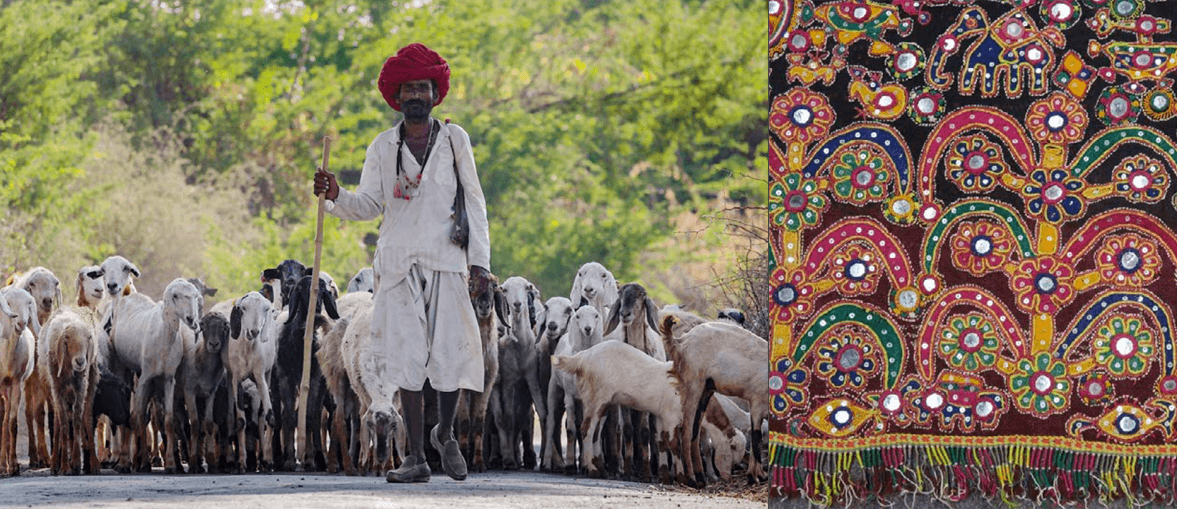
Rabari are not very sentimental
of their traditional
lifestyle, and as per them the
nomadic pastoral lifestyle
will no longer be seen as the
situation has changed. The
younger generation has much
more opportunity and exposure
to the world, hence they
do not prefer to migrate and
live nomadic life. They explore any job they can, or be in the
milk business, to sell milk to
their client. Rabari community
no more wishes to live in their
traditional houses which are
round in shape and made out
of mud, which require mud
and dung plaster and it require
high maintenance, material is
costly and woman has to give
huge amount of time and labour
to keep it in good condition.
The Rabari want to have
cement houses which has less
maintenance. So here we can
see the change in craft, in life
and in lifestyle that is adapting
contemporary lifestyle,
a key to survival, survival of Rabari in to urbanized environment,
where they will
be settle down as required.
Acceptance of urbanisation
shows that the Rabari are not
sentimental to their tradition
and hence they are taking step
ahead to accept cement houses
as a solution to their problem,
prefer machine embroidery
which is less labour intensive
and not bothered with the out
come, they are getting very
practical in their approach
more happy with the new
aesthetics which expresses
latest trend and fashion that is
satisfactory in the time limit
they have with them.
Significance
of the study
Rabari embroideries and
their traditional clothing have
unique status in Gujarat- India.
It has been very elaborate
and intricate in nature, so as
Rabari people. Rabari people
are nomadic pastoral community
for centuries and have
migrated from Rajasthan to
Gujarat in search of green
land for their herds and have
adopted changes. The community
has survival instinct in
their nature and easily adept
the environmental changes
and social changes around
them. The Rabari community
has changed the size of their
herds due to environmental
change in Gujarat; today they
have started keeping small
herds like goat, cow, and
buffalo. They have changed
their clothing and lifestyle as
per their surroundings and
according to their neighborhood.
Today due to exposure
to urbanisation and need of
economy has led them to work
in farming fields, labour work,
compromising with quality of
their embroidery and clothing,
from traditional houses like
mud bhunga to pakka makan
like cement houses, polyester
odhani and rubber chappals,
change in motifs and materials
etc. Here the need is to find
out the reasons due to which
this changes has took place
and to document this changes.
Limitations
This research will be limited
to the Ahmedabad-Gujarat and
near by Ahmedabad where the
Rabari community is living.
THE END
BIBLIOGRAPHY. Fisher N. (1995). Mud, Mirror and Thread: Folk Traditions
of Rural India. Published by Grantha Corporation- India | Frater J.
When Parrots Transform To Bikes: Social Change Reflected in Rabari Embroidery
Motifs. Source: Nomadic Peoples, New Series, Vol. 3, No. 1 (1999),
pp. | Frater J. ‘This is Ours’: Rabari Tradition and Identity in a Changing
World. Source: Nomadic Peoples, New Series, Vol. 6, No. 2 (2002), pp.
156-169 Published by: White Horse Press Stable URL: http://www.jstor.
org/stable/4312367 | Frater J. (1996). Threads of Identity: Embroidery
and Adornment of the Nomadic Rabaris. Published by Grantha Corporation-
India. | Shah A. (2012). Shifting Sands: Kutch. Published by Bandhej
Books. | Salpeteur M. et al (2015). When Knowledge Follows Blood. Current
Anthropology, 56(3), 471–483. https://doi.org/10.1086/681006
 BLS involves simultaneously engaging
both sides of the body or brain to
promote relaxation, emotional regulation,
and integration of experiences.
It is based on the understanding that
bilateral movement activates the brain’s
natural healing processes, including
reducing anxiety and stress responses.
This may sound too good to be true,
but I’ve witnessed BLS work for many
children and adults. Just think about
the way you feel after participating
in the following activities: Taking a
walk outside, riding a bike, reading
a book, dancing, rocking in a hammock
or swing. All of these activities
involve some form of bilateral stimulation
to your brain and body. At this
point, scientists are unclear how or
why BLS works, but they believe it has
a calming effect on our limbic system, which allows our brain/body to relax
naturally.
There are various ways to incorporate
more bilateral stimulation into your
daily routines with younger and older
children, and you don’t need to know all
of the science for it to work. A few examples:
Playful movement, cross-lateral
movements, eye movements, tapping or
drumming, rocking or swaying.
When working with children who
have experienced trauma, it’s essential
to approach bilateral stimulation with
sensitivity and a trauma-informed
lens. Here are some considerations to
keep in mind: Consent and Choice •
Safety and Regulation • Slow and Gentle
Approach • Emotional Support. ...
Read full text:
BLS involves simultaneously engaging
both sides of the body or brain to
promote relaxation, emotional regulation,
and integration of experiences.
It is based on the understanding that
bilateral movement activates the brain’s
natural healing processes, including
reducing anxiety and stress responses.
This may sound too good to be true,
but I’ve witnessed BLS work for many
children and adults. Just think about
the way you feel after participating
in the following activities: Taking a
walk outside, riding a bike, reading
a book, dancing, rocking in a hammock
or swing. All of these activities
involve some form of bilateral stimulation
to your brain and body. At this
point, scientists are unclear how or
why BLS works, but they believe it has
a calming effect on our limbic system, which allows our brain/body to relax
naturally.
There are various ways to incorporate
more bilateral stimulation into your
daily routines with younger and older
children, and you don’t need to know all
of the science for it to work. A few examples:
Playful movement, cross-lateral
movements, eye movements, tapping or
drumming, rocking or swaying.
When working with children who
have experienced trauma, it’s essential
to approach bilateral stimulation with
sensitivity and a trauma-informed
lens. Here are some considerations to
keep in mind: Consent and Choice •
Safety and Regulation • Slow and Gentle
Approach • Emotional Support. ...
Read full text:
 An Australian sailor who had been
adrift at sea with his dog for three
months has been rescued by a Mexican
tuna boat in international waters, the
fishing vessel’s owner said July 17th.
Timothy Lyndsay Shaddock, 54, was
aboard his incapacitated catamaran
Aloha Toa in the Pacific about 1,200
miles (1,900 kilometers) from land
when the crew of the boat from the
Grupomar fleet spotted them, the company
said in a statement. The company
said Shaddock and his dog Bella were
in a “precarious” state when found,
lacking provisions and shelter. The
tuna boat’s crew gave them medical
attention, food and hydration, it said.
Grupomar did not provide specific details
on what day Shaddock was rescued
or when he had started his voyage.
The tuna boat, captained by Oscar Meza Oregón, was expected to arrive in
the Pacific coast port of Manzanillo on
Tuesday [July 18th] with Shaddock and
Bella. Antonio Suárez Gutiérrez, Grupomar’s
founder and president, said he
was proud of his crew, praising them
for their humanity in saving the life
of someone in trouble. Shaddock told
Australia’s Nine News television that he
and his dog had survived on raw fish
and rain water after a storm damaged
his vessel and wiped out its electronics.
“I’ve been through a very difficult ordeal
at sea and I’m just needing rest and
good food because I’ve been alone at sea
a long time,” a thin and bearded Shaddock
said in video broadcast on Sunday
night Australian time “Otherwise, I’m
in very good health,” Shaddock added.
...
Find
Read full text:
An Australian sailor who had been
adrift at sea with his dog for three
months has been rescued by a Mexican
tuna boat in international waters, the
fishing vessel’s owner said July 17th.
Timothy Lyndsay Shaddock, 54, was
aboard his incapacitated catamaran
Aloha Toa in the Pacific about 1,200
miles (1,900 kilometers) from land
when the crew of the boat from the
Grupomar fleet spotted them, the company
said in a statement. The company
said Shaddock and his dog Bella were
in a “precarious” state when found,
lacking provisions and shelter. The
tuna boat’s crew gave them medical
attention, food and hydration, it said.
Grupomar did not provide specific details
on what day Shaddock was rescued
or when he had started his voyage.
The tuna boat, captained by Oscar Meza Oregón, was expected to arrive in
the Pacific coast port of Manzanillo on
Tuesday [July 18th] with Shaddock and
Bella. Antonio Suárez Gutiérrez, Grupomar’s
founder and president, said he
was proud of his crew, praising them
for their humanity in saving the life
of someone in trouble. Shaddock told
Australia’s Nine News television that he
and his dog had survived on raw fish
and rain water after a storm damaged
his vessel and wiped out its electronics.
“I’ve been through a very difficult ordeal
at sea and I’m just needing rest and
good food because I’ve been alone at sea
a long time,” a thin and bearded Shaddock
said in video broadcast on Sunday
night Australian time “Otherwise, I’m
in very good health,” Shaddock added.
...
Find
Read full text:
 Scientists have uncovered a “major
piece of the puzzle” in understanding
obsessive-compulsive disorder
(OCD), which could open up new lines
of treatment. Compulsive behaviours
—such as obsessive checking, washing,
and ordering objects— are types
of perseverative behaviour that affected
up to 3% of Western populations and
were “potentially harmful”, highlighted
the authors of a new UK study,
published in Nature Communications,
that investigated the neurochemical
basis of compulsive behaviour.
“Symptoms of intrusive thoughts and
repetitive rituals can confine patients
to their homes for months on end,”
said Professor Trevor Robbins, from
the department of psychology at the
University of Cambridge. In extreme
cases, the lack of control and sense of
hopelessness caused by OCD can result
in thoughts of suicide, he added.
Just how compulsive behaviour was
related to levels of neurotransmitters,
and its underlying neural mechanisms,
remained “unclear”, the authors
said, who pointed out that there had
been “little analysis of neurochemical
correlates of compulsive behaviour
to illuminate its underlying neural
mechanisms”. For the study, University
of Cambridge researchers used a
new method of brain scanning, called
7-Tesla proton magnetic resonance
spectroscopy (MRS) ...
Scientists have uncovered a “major
piece of the puzzle” in understanding
obsessive-compulsive disorder
(OCD), which could open up new lines
of treatment. Compulsive behaviours
—such as obsessive checking, washing,
and ordering objects— are types
of perseverative behaviour that affected
up to 3% of Western populations and
were “potentially harmful”, highlighted
the authors of a new UK study,
published in Nature Communications,
that investigated the neurochemical
basis of compulsive behaviour.
“Symptoms of intrusive thoughts and
repetitive rituals can confine patients
to their homes for months on end,”
said Professor Trevor Robbins, from
the department of psychology at the
University of Cambridge. In extreme
cases, the lack of control and sense of
hopelessness caused by OCD can result
in thoughts of suicide, he added.
Just how compulsive behaviour was
related to levels of neurotransmitters,
and its underlying neural mechanisms,
remained “unclear”, the authors
said, who pointed out that there had
been “little analysis of neurochemical
correlates of compulsive behaviour
to illuminate its underlying neural
mechanisms”. For the study, University
of Cambridge researchers used a
new method of brain scanning, called
7-Tesla proton magnetic resonance
spectroscopy (MRS) ...
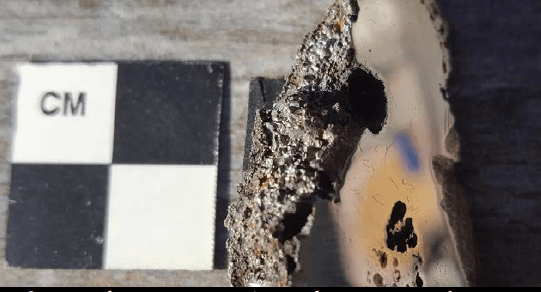 A space rock found in Somalia has
been found to contain at least two
minerals not found before in nature
and only previously known to have
been produced artificially. ... Since
these discoveries were made using a
single 70-gram (2.5-ounce) sample,
we may have barely scratched the surface
of what the rock has to offer.
The presence of water and oxygen
on Earth create more ways in which
elements can come together to create
minerals. As a result, the number we
have found originating on Earth dwarfs
those known to have formed in space.
Nevertheless, meteorites maintain their
capacity to surprise us, and the El Ali
meteorite, discovered near the town of
El Ali in the Hiiraan region of Somalia,
is certainly doing that. “Whenever you find a new mineral,
it means that the actual geological
conditions, the chemistry of the rock,
was different than what’s been found
before,” said Professor Chris Herd, who
presented the findings at the University
of Alberta’s Space Exploration Symposium
last year. The meteorite is an
“Iron, IAB meteorite”, of which more
than 350 are known. Consequently,
Herd was particularly surprised to see
something unfamiliar when examining
a slice of it. Herd asked his colleague
Dr Andrew Locock to see what was going
on. ... Herd called the novel minerals
elaliite and elkinstantonite after the
meteorite and Professor Lindy Elkins-
Tanton, respectively. ...
Read full text
A space rock found in Somalia has
been found to contain at least two
minerals not found before in nature
and only previously known to have
been produced artificially. ... Since
these discoveries were made using a
single 70-gram (2.5-ounce) sample,
we may have barely scratched the surface
of what the rock has to offer.
The presence of water and oxygen
on Earth create more ways in which
elements can come together to create
minerals. As a result, the number we
have found originating on Earth dwarfs
those known to have formed in space.
Nevertheless, meteorites maintain their
capacity to surprise us, and the El Ali
meteorite, discovered near the town of
El Ali in the Hiiraan region of Somalia,
is certainly doing that. “Whenever you find a new mineral,
it means that the actual geological
conditions, the chemistry of the rock,
was different than what’s been found
before,” said Professor Chris Herd, who
presented the findings at the University
of Alberta’s Space Exploration Symposium
last year. The meteorite is an
“Iron, IAB meteorite”, of which more
than 350 are known. Consequently,
Herd was particularly surprised to see
something unfamiliar when examining
a slice of it. Herd asked his colleague
Dr Andrew Locock to see what was going
on. ... Herd called the novel minerals
elaliite and elkinstantonite after the
meteorite and Professor Lindy Elkins-
Tanton, respectively. ...
Read full text
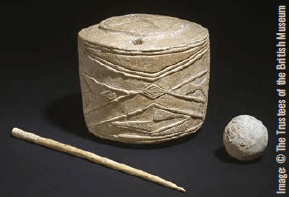 5,000-year-old chalk cylinder
decorated with elaborate geometric
patterns, which was hailed as ‘one of
the most significant ancient objects
ever found in the British Isles’ following
its discovery at Burton Agnes
in East Yorkshire, has gone on public
display for the first time at the British
Museum. The sculpture, known as the
‘Burton Agnes drum’, was unearthed
by Allen Archaeology during a routine
planning excavation in 2015; it had
been placed in a Neolithic grave containing
the remains of three children.
The two younger children had been
carefully positioned holding or touching
hands, and both were being held
by the eldest of the three. The drum
was found above the head of this last
individual, and the grave also contained
a chalk ball and a polished bone pin.
A radiocarbon date from human
remains places this burial in 3005-2890
BC, around the time of the construction
of Stonehenge , suggesting that the
Folkton drums might be much earlier ...
Read full text:
5,000-year-old chalk cylinder
decorated with elaborate geometric
patterns, which was hailed as ‘one of
the most significant ancient objects
ever found in the British Isles’ following
its discovery at Burton Agnes
in East Yorkshire, has gone on public
display for the first time at the British
Museum. The sculpture, known as the
‘Burton Agnes drum’, was unearthed
by Allen Archaeology during a routine
planning excavation in 2015; it had
been placed in a Neolithic grave containing
the remains of three children.
The two younger children had been
carefully positioned holding or touching
hands, and both were being held
by the eldest of the three. The drum
was found above the head of this last
individual, and the grave also contained
a chalk ball and a polished bone pin.
A radiocarbon date from human
remains places this burial in 3005-2890
BC, around the time of the construction
of Stonehenge , suggesting that the
Folkton drums might be much earlier ...
Read full text:
 Prior to Bell Labs’ first working
transistor in 1947, which ushered
in the advent of semiconductor technology
and the computer age, every
long-distance telephone call, radio and
television broadcast, radar signal and
sound recording was made possible
only through the ubiquitous vacuum
tube. Developed from the electric light
bulb in the first decade of the 20th
century, vacuum tubes were largely
relegated to surplus stores by the 1960s
—but even today they remain essential
in industrial applications such as
particle accelerators, MRI scanners and
even microwave ovens.
This amplification device also endures
in music recording and reproduction,
where tubes are championed by some designers, musicians and listeners
for their sonic charms —ample
enough to cause some to forswear the
transistor amp forever. “The difference
between tubes and transistors is
like the difference between watching
a widescreen 70 mm film print in a
theater and a DVD on a home digital
projector,” says Charles Whitener, CEO
of tube-and-electronics manufacturer
Western Electric in Rossville, Ga. “Music
played through transistor electronics
has a certain compression and
thinness, while a vacuum-tube system
has a voluptuous, musical soundstage
with front-to-back depth. It’s lush, it’s
real… it sounds human.” ...
Read full text
Prior to Bell Labs’ first working
transistor in 1947, which ushered
in the advent of semiconductor technology
and the computer age, every
long-distance telephone call, radio and
television broadcast, radar signal and
sound recording was made possible
only through the ubiquitous vacuum
tube. Developed from the electric light
bulb in the first decade of the 20th
century, vacuum tubes were largely
relegated to surplus stores by the 1960s
—but even today they remain essential
in industrial applications such as
particle accelerators, MRI scanners and
even microwave ovens.
This amplification device also endures
in music recording and reproduction,
where tubes are championed by some designers, musicians and listeners
for their sonic charms —ample
enough to cause some to forswear the
transistor amp forever. “The difference
between tubes and transistors is
like the difference between watching
a widescreen 70 mm film print in a
theater and a DVD on a home digital
projector,” says Charles Whitener, CEO
of tube-and-electronics manufacturer
Western Electric in Rossville, Ga. “Music
played through transistor electronics
has a certain compression and
thinness, while a vacuum-tube system
has a voluptuous, musical soundstage
with front-to-back depth. It’s lush, it’s
real… it sounds human.” ...
Read full text
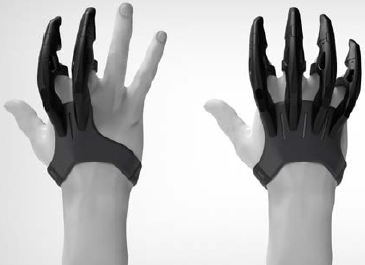 One of the 9 winners of the iF Design
Student Award 2023.
SDG: Quality Education
Design: David Edquilang
University: University of Houston, USA
Prize Money: 4000 Euro
Hundreds of thousands of people experience
finger amputations every year.
Currently, there are very few available
prostheses that restore the functionality
of amputated fingers. Most are very
expensive, costing about 3,000 dollars
per finger, an unaffordable price for the
vast majority of people. Lunet is a fully
3D-printed mechanical finger prosthesis
that requires no metal fasteners to
assemble. It features a unique, robust
mechanism to actuate the fingers. It
can be quickly and affordably produced,
making it accessible for all amputees.
Read full text
One of the 9 winners of the iF Design
Student Award 2023.
SDG: Quality Education
Design: David Edquilang
University: University of Houston, USA
Prize Money: 4000 Euro
Hundreds of thousands of people experience
finger amputations every year.
Currently, there are very few available
prostheses that restore the functionality
of amputated fingers. Most are very
expensive, costing about 3,000 dollars
per finger, an unaffordable price for the
vast majority of people. Lunet is a fully
3D-printed mechanical finger prosthesis
that requires no metal fasteners to
assemble. It features a unique, robust
mechanism to actuate the fingers. It
can be quickly and affordably produced,
making it accessible for all amputees.
Read full text
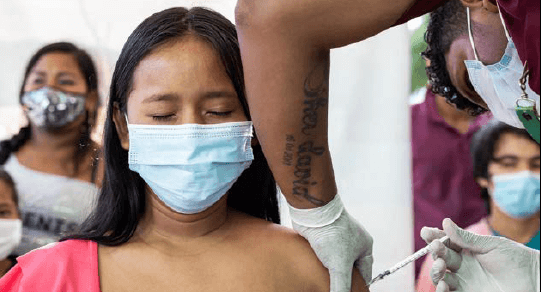 In 2020, the overall life expectancy in
the US dropped by 1.5 years, largely
due to the COVID-19 pandemic. But the
reduction wasn’t shared equally among
the general population; Native American
people lost an average of 4.5 years
of life expectancy; Black and Hispanic
people lost, on average, 3 years, while
white people lost only 1.2 years.
This figure tracks with other health
trends: In general, Black and Hispanic
people and those living in poverty in the
US have worse health outcomes —more
high blood pressure, higher rates of diabetes
and increased maternal and infant
mortality— than the overall population.
Public health researcher Arline
Geronimus from the University of
Michigan says the traditional belief that
the disparities are due to genetics, diet
and exercise don’t explain data that’s
accumulated over the years. Instead,
she makes the case that marginalized
people suffer nearly constant stress
from living with poverty and discrimination,
which damages their bodies at
the cellular level and leads to increasingly
serious health problems over time.
Geronimus coined a term for this
chronic stress —“weathering,” which,
she says, “literally wears down your
heart, your arteries, your neuroendocrine
systems, ... all your body systems so that
in effect, you become chronologically old
at a young age.” She writes about the
phenomenon in her new book, Weathering:
The Extraordinary Stress of Ordinary
Life in an Unjust Society. ...
Read full text:
In 2020, the overall life expectancy in
the US dropped by 1.5 years, largely
due to the COVID-19 pandemic. But the
reduction wasn’t shared equally among
the general population; Native American
people lost an average of 4.5 years
of life expectancy; Black and Hispanic
people lost, on average, 3 years, while
white people lost only 1.2 years.
This figure tracks with other health
trends: In general, Black and Hispanic
people and those living in poverty in the
US have worse health outcomes —more
high blood pressure, higher rates of diabetes
and increased maternal and infant
mortality— than the overall population.
Public health researcher Arline
Geronimus from the University of
Michigan says the traditional belief that
the disparities are due to genetics, diet
and exercise don’t explain data that’s
accumulated over the years. Instead,
she makes the case that marginalized
people suffer nearly constant stress
from living with poverty and discrimination,
which damages their bodies at
the cellular level and leads to increasingly
serious health problems over time.
Geronimus coined a term for this
chronic stress —“weathering,” which,
she says, “literally wears down your
heart, your arteries, your neuroendocrine
systems, ... all your body systems so that
in effect, you become chronologically old
at a young age.” She writes about the
phenomenon in her new book, Weathering:
The Extraordinary Stress of Ordinary
Life in an Unjust Society. ...
Read full text:
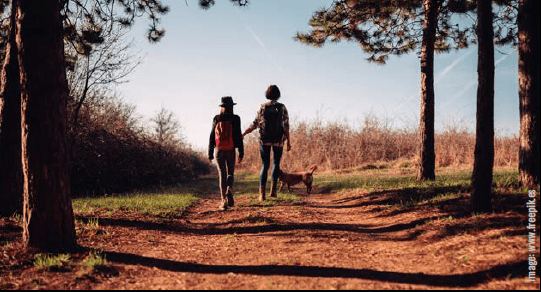 When you walk, your eyes are given
a rest from screens and your brain
is momentarily relieved from all the
stresses of your working day. And what
if I told you that walking isn’t just good
for distracting your mind, that it could
actually help you focus more effectively
instead? ...
So what fuses the connection between
walking and thinking? For starters,
walking is extremely beneficial to your
health. It is one of the best forms of
cardio and a simple and effective way to
achieve a number of fitness goals.
Besides increased cardiovascular and
pulmonary fitness, it also improves
balance and even muscle and bone
strength. Getting more steps in every
day can also help relieve the symptoms
of hypertension, joint pain, high cholesterol, and diabetes.
But, why does walking help us think?
Aristotle was a peripatetic, or “one who
paces.” He believed that with walking
came conversation, and presumably,
contemplation. ... So what really is it
that gets those cogs turning when you
stroll and generate ideas in a way that
sitting still inhibits? Physical chemistry
(giving your muscles and brain more
oxygen), rhythm (makes thinking more
coherent and continuous), new scenery
(it switches your focus) and fitness (active
body – active mind). ...
For those days when walking is not
an option, there are similar activities
you can do to ensure the most productive
thinking, such as knitting and
household chores ...
Read full text:
When you walk, your eyes are given
a rest from screens and your brain
is momentarily relieved from all the
stresses of your working day. And what
if I told you that walking isn’t just good
for distracting your mind, that it could
actually help you focus more effectively
instead? ...
So what fuses the connection between
walking and thinking? For starters,
walking is extremely beneficial to your
health. It is one of the best forms of
cardio and a simple and effective way to
achieve a number of fitness goals.
Besides increased cardiovascular and
pulmonary fitness, it also improves
balance and even muscle and bone
strength. Getting more steps in every
day can also help relieve the symptoms
of hypertension, joint pain, high cholesterol, and diabetes.
But, why does walking help us think?
Aristotle was a peripatetic, or “one who
paces.” He believed that with walking
came conversation, and presumably,
contemplation. ... So what really is it
that gets those cogs turning when you
stroll and generate ideas in a way that
sitting still inhibits? Physical chemistry
(giving your muscles and brain more
oxygen), rhythm (makes thinking more
coherent and continuous), new scenery
(it switches your focus) and fitness (active
body – active mind). ...
For those days when walking is not
an option, there are similar activities
you can do to ensure the most productive
thinking, such as knitting and
household chores ...
Read full text:
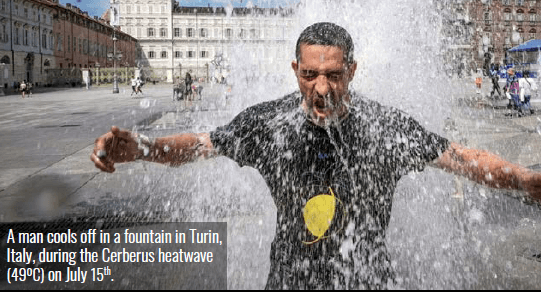 Thirty years ago, the world’s nations
agreed to prevent dangerous
human interference with the climate
system. But what is “dangerous climate
change”? Just turn on the television,
read the headlines of the morning paper
or view your social media feeds. For
we are watching it play out in real time
this summer, more profoundly than
ever before, in the form of unprecedented
floods, heatwaves and wildfires.
Now we know what dangerous climate
change looks like. ...
The average warming of the planet is
entirely consistent with what climate
modelers warned decades ago would
happen if we continued with the business-
as-usual burning of fossil fuels.
Yes, there are alarming data coming in,
from record-shattering loss of winter
sea ice in the southern hemisphere to
off-the-charts warmth in the North
Atlantic with hot tub-grade waters off
the Florida coast. ... We can attribute
blame to a combination of ongoing
human-caused warming, an incipient
major El Niño event and the vagaries of
natural variability. ...
We have failed to prevent dangerous
climate change. What remains to be
seen is just how bad we’re willing to let
it get. A window of opportunity remains
for averting a catastrophic 1.5ºC / 2.7ºF
warming of the planet, beyond which
we’ll see far worse consequences than
anything we’ve seen so far. But that
window is closing and we’re not making
enough progress.
Read full text:
Thirty years ago, the world’s nations
agreed to prevent dangerous
human interference with the climate
system. But what is “dangerous climate
change”? Just turn on the television,
read the headlines of the morning paper
or view your social media feeds. For
we are watching it play out in real time
this summer, more profoundly than
ever before, in the form of unprecedented
floods, heatwaves and wildfires.
Now we know what dangerous climate
change looks like. ...
The average warming of the planet is
entirely consistent with what climate
modelers warned decades ago would
happen if we continued with the business-
as-usual burning of fossil fuels.
Yes, there are alarming data coming in,
from record-shattering loss of winter
sea ice in the southern hemisphere to
off-the-charts warmth in the North
Atlantic with hot tub-grade waters off
the Florida coast. ... We can attribute
blame to a combination of ongoing
human-caused warming, an incipient
major El Niño event and the vagaries of
natural variability. ...
We have failed to prevent dangerous
climate change. What remains to be
seen is just how bad we’re willing to let
it get. A window of opportunity remains
for averting a catastrophic 1.5ºC / 2.7ºF
warming of the planet, beyond which
we’ll see far worse consequences than
anything we’ve seen so far. But that
window is closing and we’re not making
enough progress.
Read full text:
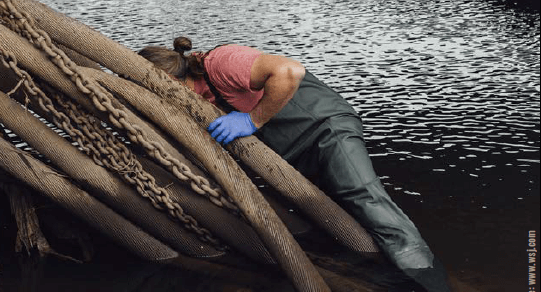 An investigation carried out by the
Wall Street Journal has accused US
operators AT&T, Verizon, and other
telecom companies of contaminating US
water and soil with toxic lead cabling.
According to the WSJ, the toxic lead can
be found on telecom cables installed
underwater, in the soil, and on poles.
The investigation has found that as the
lead degrades over time it is released
into the water, soil, and air.
The investigation collected samples
from various parts of the country where
the lead could be found, including on
the Mississippi River (Louisiana), the
Detroit River (Michigan), the Willamette
River (Oregon), and the Passaic River
(New Jersey). In total, the test samples
from nearly 130 underwater-cable
sites, conducted by several independent laboratories, were found to be toxic. WSJ
states that its investigation revealed a
hidden source of contamination in more
than 2,000 lead-covered cables that
haven’t been addressed by the companies
or environmental regulators.
Although US mobile operators haven’t
used cabling containing lead since 1964,
old cabling is typically left in place
when traditional cabling is replaced
with fiber, says WSJ. ... The WSJ article
claims that both AT&T and Verizon knew
that the cables were toxic but have chosen
to not remove them.
In another article, the publication
cites documents and former employees
as evidence that the two telcos knew
of the dangers of lead cables. ...
Read full text:
An investigation carried out by the
Wall Street Journal has accused US
operators AT&T, Verizon, and other
telecom companies of contaminating US
water and soil with toxic lead cabling.
According to the WSJ, the toxic lead can
be found on telecom cables installed
underwater, in the soil, and on poles.
The investigation has found that as the
lead degrades over time it is released
into the water, soil, and air.
The investigation collected samples
from various parts of the country where
the lead could be found, including on
the Mississippi River (Louisiana), the
Detroit River (Michigan), the Willamette
River (Oregon), and the Passaic River
(New Jersey). In total, the test samples
from nearly 130 underwater-cable
sites, conducted by several independent laboratories, were found to be toxic. WSJ
states that its investigation revealed a
hidden source of contamination in more
than 2,000 lead-covered cables that
haven’t been addressed by the companies
or environmental regulators.
Although US mobile operators haven’t
used cabling containing lead since 1964,
old cabling is typically left in place
when traditional cabling is replaced
with fiber, says WSJ. ... The WSJ article
claims that both AT&T and Verizon knew
that the cables were toxic but have chosen
to not remove them.
In another article, the publication
cites documents and former employees
as evidence that the two telcos knew
of the dangers of lead cables. ...
Read full text:
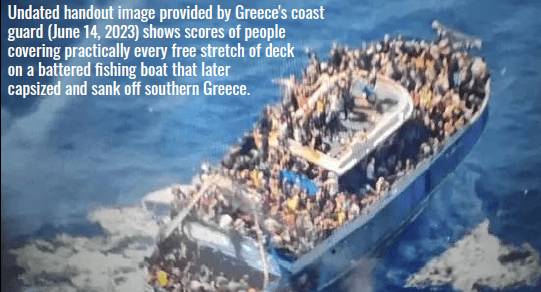 The migrants were mostly Pakistanis,
Syrians, Palestinians, and
Egyptians. They left the port of Tobruk,
Libya headed for Italy, and what they
hoped would be a better life in Europe.
Five days later, the Adriana —a fishing
trawler dangerously overcrowded—
became stranded in deep waters to the
southwest of Greece’s Peloponnese
peninsula. On June 14th, in the middle
of the night, it capsized, then sank,
while a Greek Coast Guard vessel was
stationed just a short distance away. As
many as seven hundred and fifty men,
women, and children are believed to
have been on board. Only a hundred
and four have been found alive. It is
one of the worst shipwrecks in the
Mediterranean’s history. ...
Nine Egyptian men who had been
on board are being held by the Greek authorities in pretrial detention; according
to the Associated Press, they are
charged with various crimes, including
negligent manslaughter and people
smuggling. But many questions remain
about both the actions of the Coast
Guard and the treatment of the survivors.
...
Athena Linos visited the migrants
the day after the shipwreck, when
they were being held in a hangar in
Kalamata. Linos has studied refugees
and migrants in Greece for the past
ten years ... “Twenty-seven of them
were in the hospital, the rest were
held in a storeroom. “It was a place
that was not for humans,” she said.
“There were only a few cracks of light
coming in from atop the walls. ...
The migrants were mostly Pakistanis,
Syrians, Palestinians, and
Egyptians. They left the port of Tobruk,
Libya headed for Italy, and what they
hoped would be a better life in Europe.
Five days later, the Adriana —a fishing
trawler dangerously overcrowded—
became stranded in deep waters to the
southwest of Greece’s Peloponnese
peninsula. On June 14th, in the middle
of the night, it capsized, then sank,
while a Greek Coast Guard vessel was
stationed just a short distance away. As
many as seven hundred and fifty men,
women, and children are believed to
have been on board. Only a hundred
and four have been found alive. It is
one of the worst shipwrecks in the
Mediterranean’s history. ...
Nine Egyptian men who had been
on board are being held by the Greek authorities in pretrial detention; according
to the Associated Press, they are
charged with various crimes, including
negligent manslaughter and people
smuggling. But many questions remain
about both the actions of the Coast
Guard and the treatment of the survivors.
...
Athena Linos visited the migrants
the day after the shipwreck, when
they were being held in a hangar in
Kalamata. Linos has studied refugees
and migrants in Greece for the past
ten years ... “Twenty-seven of them
were in the hospital, the rest were
held in a storeroom. “It was a place
that was not for humans,” she said.
“There were only a few cracks of light
coming in from atop the walls. ...
 Working 9-5 could become a thing
of the past, as climate change
continues to wreak havoc on the planet
and, with it, the workforce as well. As
the world becomes hotter amid global
warming, companies may need to
switch up their employees’ working
patterns to cope with “uncomfortable”
heat levels, according to researchers
from the University of Oxford.
It’s bad news for night owls, as the
Oxford experts recommended that
workers will need to start their shift at
6 a.m. and finish by 2 p.m. in order to
beat the afternoon heat in the UK. For
those with a long commute, this could
mean starting the day as early as 3 a.m.
or 4 a.m. to get ready, leave for work,
and reach work on time.
The new study, published in the
journal Nature Sustainability, claims that Britain is one of many European countries
that will have to adapt the most to
cope with sweltering temperatures.
This is not something entirely new,
as many businesses have already embraced
summer hours. L’Oréal, Asos,
and Nike are among the growing number
of companies that are allowing staff
to leave work between midday and 3.30
p.m. on Fridays during the summer
months, as per a Fortune report.
However, instead of a means to
engage workers by allowing them to
clock off early, the University of Oxford
study’s work schedule suggestion is
more seriously aimed at avoiding a scenario
where staff are annually overheating.
The experts warned that as heat
builds up and becomes more ...
Working 9-5 could become a thing
of the past, as climate change
continues to wreak havoc on the planet
and, with it, the workforce as well. As
the world becomes hotter amid global
warming, companies may need to
switch up their employees’ working
patterns to cope with “uncomfortable”
heat levels, according to researchers
from the University of Oxford.
It’s bad news for night owls, as the
Oxford experts recommended that
workers will need to start their shift at
6 a.m. and finish by 2 p.m. in order to
beat the afternoon heat in the UK. For
those with a long commute, this could
mean starting the day as early as 3 a.m.
or 4 a.m. to get ready, leave for work,
and reach work on time.
The new study, published in the
journal Nature Sustainability, claims that Britain is one of many European countries
that will have to adapt the most to
cope with sweltering temperatures.
This is not something entirely new,
as many businesses have already embraced
summer hours. L’Oréal, Asos,
and Nike are among the growing number
of companies that are allowing staff
to leave work between midday and 3.30
p.m. on Fridays during the summer
months, as per a Fortune report.
However, instead of a means to
engage workers by allowing them to
clock off early, the University of Oxford
study’s work schedule suggestion is
more seriously aimed at avoiding a scenario
where staff are annually overheating.
The experts warned that as heat
builds up and becomes more ...
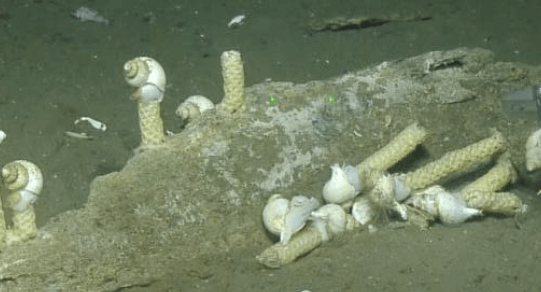 As life comes to an end, so too does
life go on. This is true even in the
benthic depths, where the bounty of a
fallen whale carcass created and continues
to support a mini ecosystem for
decades after the whale’s death. And
the remains of a whale deep under the
waters of the North Pacific are helping
scientists understand how these
remains allow ecosystems to thrive.
These massive carcasses are known
as “whale fall”, and this one was discovered
1,250 meters (4,100 feet) deep
off the coast of British Columbia at a
site known as Clayoquot Slope in 2009
by Monterey Bay Aquarium Research
Institute researchers.
Since 2012, scientists with Ocean
Networks Canada (ONC) have returned
to the site often to study the skeleton’s decomposition rate and track the
changes in the diversity of marine
life living there, feasting on the rich
bounty. The most recent visit took
place as part of an expedition undertaken
by the Ocean Exploration Trust’s
(OET) EV Nautilus to help ONC check on
the underwater observatories currently
operating on Clayoquot Slope.
While in the area, the ROV Hercules
—a remotely operated submersible—
also took high-resolution video and a
photogrammetry survey of the whale
fall, led by benthic ecologist Fabio De
Leo of ONC. “Whale falls represent an
oasis of food supply in an often foodpoor
deep-sea floor and sustain a diverse
assemblage of marine organisms
...
As life comes to an end, so too does
life go on. This is true even in the
benthic depths, where the bounty of a
fallen whale carcass created and continues
to support a mini ecosystem for
decades after the whale’s death. And
the remains of a whale deep under the
waters of the North Pacific are helping
scientists understand how these
remains allow ecosystems to thrive.
These massive carcasses are known
as “whale fall”, and this one was discovered
1,250 meters (4,100 feet) deep
off the coast of British Columbia at a
site known as Clayoquot Slope in 2009
by Monterey Bay Aquarium Research
Institute researchers.
Since 2012, scientists with Ocean
Networks Canada (ONC) have returned
to the site often to study the skeleton’s decomposition rate and track the
changes in the diversity of marine
life living there, feasting on the rich
bounty. The most recent visit took
place as part of an expedition undertaken
by the Ocean Exploration Trust’s
(OET) EV Nautilus to help ONC check on
the underwater observatories currently
operating on Clayoquot Slope.
While in the area, the ROV Hercules
—a remotely operated submersible—
also took high-resolution video and a
photogrammetry survey of the whale
fall, led by benthic ecologist Fabio De
Leo of ONC. “Whale falls represent an
oasis of food supply in an often foodpoor
deep-sea floor and sustain a diverse
assemblage of marine organisms
...
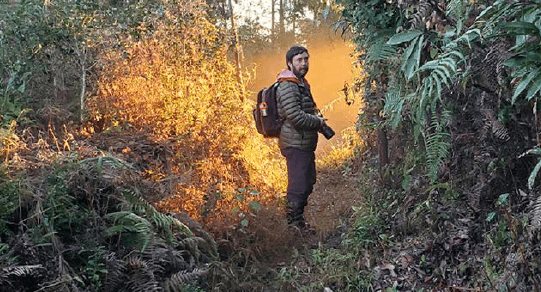 Michael Levin, a developmental
biologist at Tufts University, has
a knack for taking an unassuming organism
and showing it’s capable of the
darnedest things. ...
Not long ago I met Levin at a workshop
on science, technology, and Buddhism
in Kathmandu. His scientific
talk was one of the most captivating
I’ve ever heard. Every slide introduced
some bizarre new experiment. Butterflies
retain memories from when they
were caterpillars, even though their
brains turned to mush in the chrysalis.
Cut off the head and tail of a planarian,
or flatworm, and it can grow two
new heads; if you amputate again, the
worm will regrow both heads. Levin
argues the worm stores the new shape
in its body as an electrical pattern. In
fact, he thinks electrical signaling is pervasive in nature; it is not limited
to neurons. Recently, Levin and
colleagues found that some diseases
might be cured by retraining the gene
and protein networks as one might
train a neural network. ...
I was doing a home-school unit with
my oldest son, and we wanted to understand
what the slime mold Physarum
does. It’s growing in a Petri dish of
agar. It behaves by changing its shape.
It crawls this way or that way. No matter
how big it is —it could be meters
across— it’s one cell. ... We grew the
Physarum on a plate, and the plate was
sitting on a speaker, and my student
was driving the speaker with her
iPhone. And we could see that for certain
types of music, it would grow quite
differently than for others. ...
Michael Levin, a developmental
biologist at Tufts University, has
a knack for taking an unassuming organism
and showing it’s capable of the
darnedest things. ...
Not long ago I met Levin at a workshop
on science, technology, and Buddhism
in Kathmandu. His scientific
talk was one of the most captivating
I’ve ever heard. Every slide introduced
some bizarre new experiment. Butterflies
retain memories from when they
were caterpillars, even though their
brains turned to mush in the chrysalis.
Cut off the head and tail of a planarian,
or flatworm, and it can grow two
new heads; if you amputate again, the
worm will regrow both heads. Levin
argues the worm stores the new shape
in its body as an electrical pattern. In
fact, he thinks electrical signaling is pervasive in nature; it is not limited
to neurons. Recently, Levin and
colleagues found that some diseases
might be cured by retraining the gene
and protein networks as one might
train a neural network. ...
I was doing a home-school unit with
my oldest son, and we wanted to understand
what the slime mold Physarum
does. It’s growing in a Petri dish of
agar. It behaves by changing its shape.
It crawls this way or that way. No matter
how big it is —it could be meters
across— it’s one cell. ... We grew the
Physarum on a plate, and the plate was
sitting on a speaker, and my student
was driving the speaker with her
iPhone. And we could see that for certain
types of music, it would grow quite
differently than for others. ...

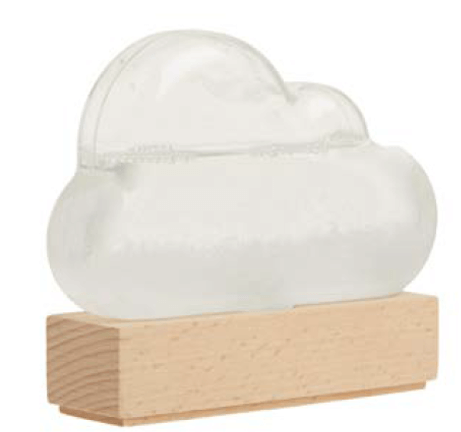 Filled with a special
liquid that responds to changes in the
atmosphere, the crystals within the
cloud-shaped glass indicate whether
it’ll be fair, cloudy, rainy, windy, or
stormy. Put it on a windowsill or
a desk, as irresistible décor for the
curious-minded. www.amazon.com
Filled with a special
liquid that responds to changes in the
atmosphere, the crystals within the
cloud-shaped glass indicate whether
it’ll be fair, cloudy, rainy, windy, or
stormy. Put it on a windowsill or
a desk, as irresistible décor for the
curious-minded. www.amazon.com
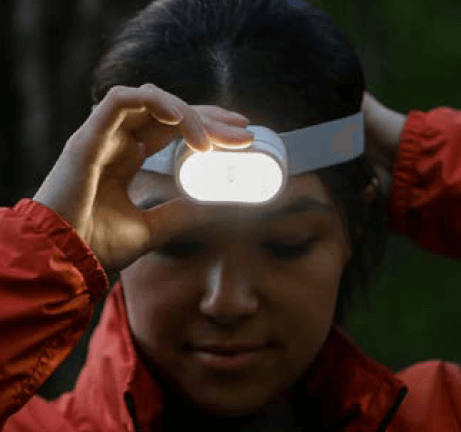 2-in-1 Solar headlamp
and flashlight. Rechargeable via its
solar panel or its micro USB port (cord
included). store.moma.org
2-in-1 Solar headlamp
and flashlight. Rechargeable via its
solar panel or its micro USB port (cord
included). store.moma.org

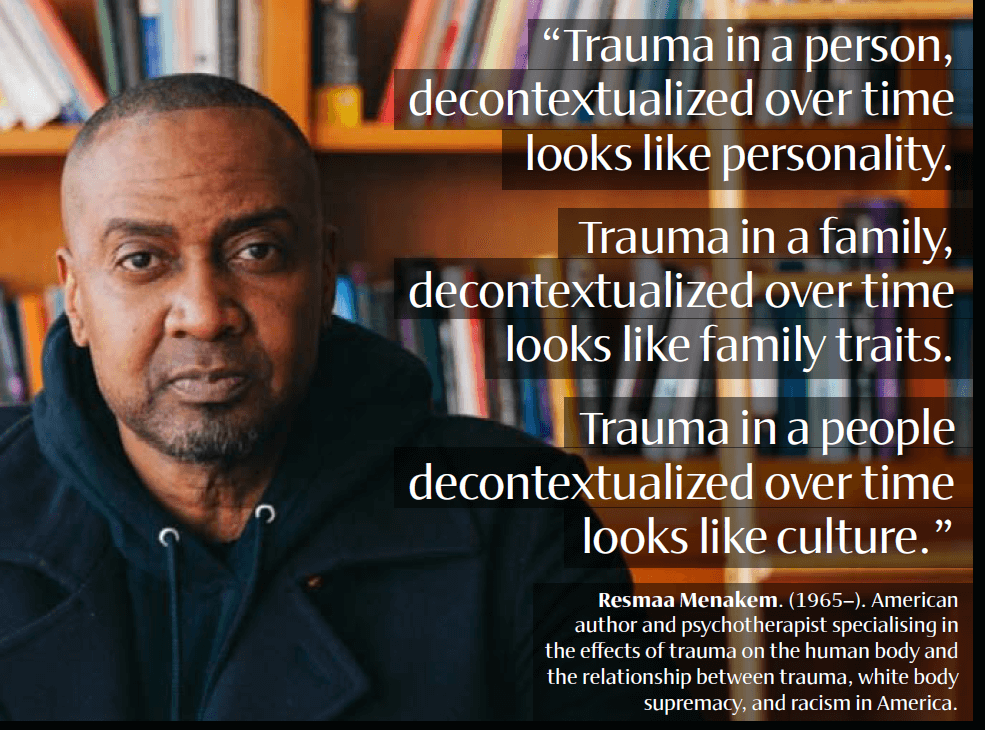 “Trauma in a person,
decontextualized over time
looks like personality.
Trauma in a family,
decontextualized over time
looks like family traits.
Trauma in a people
decontextualized over time
looks like culture.”
“Trauma in a person,
decontextualized over time
looks like personality.
Trauma in a family,
decontextualized over time
looks like family traits.
Trauma in a people
decontextualized over time
looks like culture.”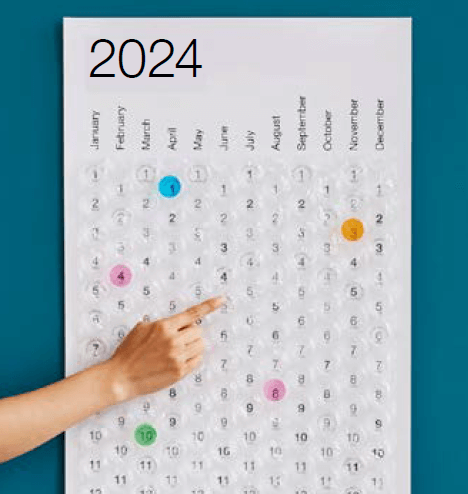
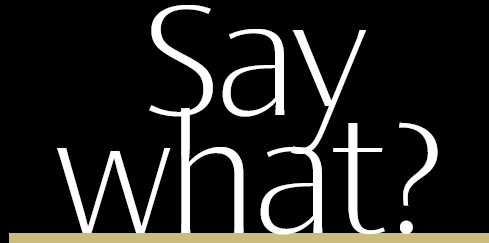
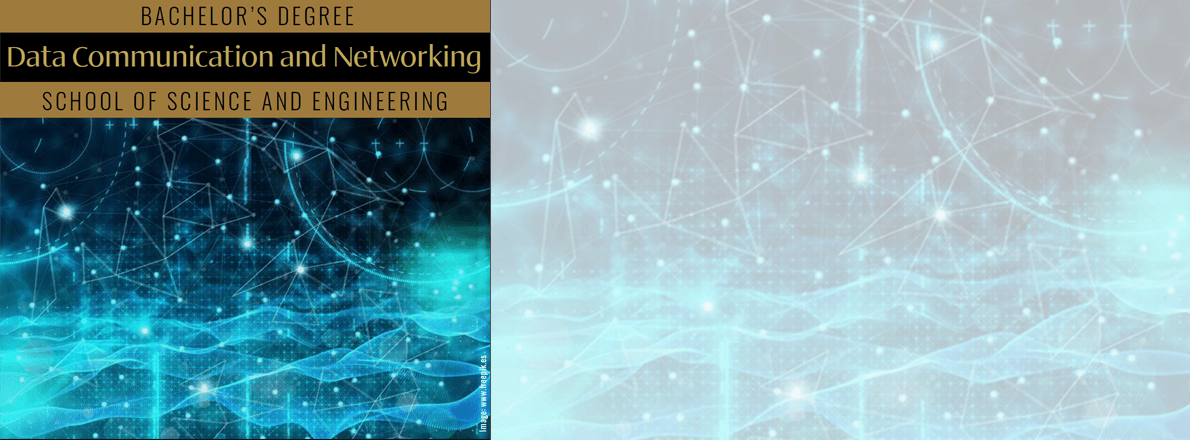 The Data Communication and Networking
degree program aims to
help students understand and develop
mobile technologies. Opportunities
have increased for Data Communication
and Networking developers. This
program is primarily concerned with
information processes, the structure
and procedures needed to represent
them, and the systems needed to
implement them. A student with an
AIU degree in Data Communication
and Networking will be able to keep
pace with evolving technologies —
such as Apple’s iOS and Android™
OS— by learning to create innovative
applications for iPhone®, iPad®, Android
™, and Windows® devices. We
need a new generation of digital marketers
with the skills to create and
manage ways to engage audiences,
sell products, and grow businesses.
Our program does not require every
student to study the same subjects and
use the same books and other learning
materials as every other student.
If you are a purpose-driven individual
who wants to elevate their life and
make a solid contribution to the world,
then this program is for you.
The Data Communication and Networking
degree program aims to
help students understand and develop
mobile technologies. Opportunities
have increased for Data Communication
and Networking developers. This
program is primarily concerned with
information processes, the structure
and procedures needed to represent
them, and the systems needed to
implement them. A student with an
AIU degree in Data Communication
and Networking will be able to keep
pace with evolving technologies —
such as Apple’s iOS and Android™
OS— by learning to create innovative
applications for iPhone®, iPad®, Android
™, and Windows® devices. We
need a new generation of digital marketers
with the skills to create and
manage ways to engage audiences,
sell products, and grow businesses.
Our program does not require every
student to study the same subjects and
use the same books and other learning
materials as every other student.
If you are a purpose-driven individual
who wants to elevate their life and
make a solid contribution to the world,
then this program is for you.
 Atlantic International University is accredited by the Accreditation Service for International
Schools, Colleges and Universities (ASIC). ASIC Accreditation is an internationally
renowned quality standard for colleges and universities. Visit ASIC’s Directory of Accredited
Colleges and Universities. ASIC is a member of CHEA International Quality Group
(CIQG) in the USA, an approved accreditation body by the Ministerial Department of the Home Office
in the UK, and is listed in the International Directory of the Council for Higher Education Accreditation
(CHEA). The University is based in the United States and was established by corporate charter in 1998.
Atlantic International University is accredited by the Accreditation Service for International
Schools, Colleges and Universities (ASIC). ASIC Accreditation is an internationally
renowned quality standard for colleges and universities. Visit ASIC’s Directory of Accredited
Colleges and Universities. ASIC is a member of CHEA International Quality Group
(CIQG) in the USA, an approved accreditation body by the Ministerial Department of the Home Office
in the UK, and is listed in the International Directory of the Council for Higher Education Accreditation
(CHEA). The University is based in the United States and was established by corporate charter in 1998.
 In some cases, accredited colleges
may not accept for transfer courses and degrees
completed at unaccredited colleges, and some
employers may require an accredited degree as
a basis for eligibility for employment. Potential
students should consider how the above may affect
their interests, AIU respects the unique rules and
regulations of each country and does not seek to
influence the respective authorities. In the event
that a prospective student wishes to carry out any
government review or process in regards to his
university degree, we recommend that the requirements
of such are explored in detail with the relevant
authorities by the prospective student as the
university does not intervene in such processes.
AIU students can be found in over 180 countries,
they actively participate and volunteer
in their communities as part of their academic
program and have allocated thousands of service
hours to diverse causes and initiatives. AIU
programs follow the standards commonly used by
colleges and universities in the United States with
regards to the following: academic program
structure, degree issued, transcript, and
other graduation documents.
AIU graduation documents can include
an apostille and authentication from the
US Department of State to facilitate their
use internationally.
In some cases, accredited colleges
may not accept for transfer courses and degrees
completed at unaccredited colleges, and some
employers may require an accredited degree as
a basis for eligibility for employment. Potential
students should consider how the above may affect
their interests, AIU respects the unique rules and
regulations of each country and does not seek to
influence the respective authorities. In the event
that a prospective student wishes to carry out any
government review or process in regards to his
university degree, we recommend that the requirements
of such are explored in detail with the relevant
authorities by the prospective student as the
university does not intervene in such processes.
AIU students can be found in over 180 countries,
they actively participate and volunteer
in their communities as part of their academic
program and have allocated thousands of service
hours to diverse causes and initiatives. AIU
programs follow the standards commonly used by
colleges and universities in the United States with
regards to the following: academic program
structure, degree issued, transcript, and
other graduation documents.
AIU graduation documents can include
an apostille and authentication from the
US Department of State to facilitate their
use internationally.
| Dr. Franklin Valcin Presi den t/Academic Dean |
Dr. José Mercado Chief Executive Officer Chairman of the Board of Trustees |
Ricardo González, PhD Provost |
| Dr. Ricardo Gonzalez Chief Operation Officer and MKT Director |
Linda Collazo Logistics Coordinator |
AIU Tutors Coordinators: Deborah Rodriguez Amiakhor Ejaeta Amanda Gutierrez William Mora Miriam James Admissions Coordinators: Amalia Aldrett Sandra Garcia Junko Shimizu Veronica Amuz Alba Ochoa Jenis Garcia Judith Brown Chris Soto René Cordón Dr. Anderas Rissler Academic Coordinators: Dr. Adesida Oluwafemi Dr. Emmanuel Gbagu Dr. Lucia Gorea Dr. Edgar Colon Dr. Mario Rios Freddy Frejus Dr. Nilani Ljunggren De Silva Dr. Scott Wilson Dr. Mohammad Shaidul Islam |
| Dr. Miriam Garibaldi Vice provost for Research |
Carolina Valdes Human Resource Coordinator |
|
| Dr. Ofelia Miller Director of AIU |
Carlos Aponte Teleco mmunications Coordinator |
|
| Clara Margalef Director of Special Projects of AIU |
David Jung Corporate/Legal Counsel |
|
| Juan Pablo Moreno Director of Operations |
Bruce Kim Advisor/Consultant |
|
| Paula Viera Director of Intelligence Systems |
Thomas Kim Corporate/ Accounting Counsel |
|
| Felipe Gomez Design Director / IT Supervisor |
Maricela Esparza Administrative Coordinator |
|
| Kevin Moll Web Designer |
Chris Benjamin IT and Hosting Support |
|
| Daritza Ysla IT Coordinator |
Maria Pastrana Accounting Coordinator |
|
| Daritza Ysla IT Coordinator |
Roberto Aldrett Communications Coordinator |
|
| Nadeem Awan Chief Programming Officer |
Giovanni Castillo IT Support |
|
| Dr. Edward Lambert Academic Director |
Antonella Fonseca Quality Control & Data Analysis |
|
| Dr. Ariadna Romero Advisor Coordinator |
Adrián Varela Graphic Design |
|
| Jhanzaib Awan Senior Programmer |
Vanesa D’Angelo Content Writer |
|
| Leonardo Salas Human Resource Manager |
Jaime Rotlewicz Dean of Admissions |
|
| Benjamin Joseph IT and Technology Support |
Michael Phillips Registrar’s Office |
|
| Rosie Perez Finance Coordinator |
||
 The School of Business and Economics
allows aspiring and practicing
professionals, managers, and entrepreneurs
in the private and public sectors
to complete a self paced distance
learning degree program of the highest
academic standard.
The ultimate goal is to empower
learners and help them take advantage
of the enormous array of resources
from the world environment in order
to eliminate the current continuum of
poverty and limitations.
Degree programs are designed for
those students whose professional experience has been in business,
marketing, administration, economics,
finance and management.
The School of Business and Economics
allows aspiring and practicing
professionals, managers, and entrepreneurs
in the private and public sectors
to complete a self paced distance
learning degree program of the highest
academic standard.
The ultimate goal is to empower
learners and help them take advantage
of the enormous array of resources
from the world environment in order
to eliminate the current continuum of
poverty and limitations.
Degree programs are designed for
those students whose professional experience has been in business,
marketing, administration, economics,
finance and management.
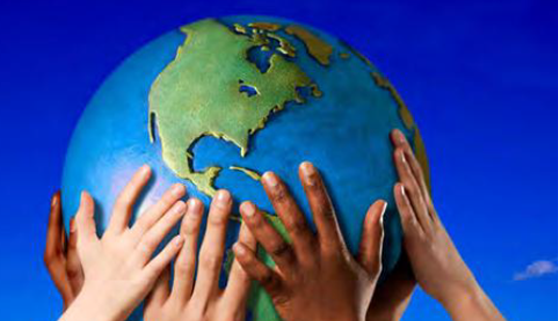 The School of Social and Human Studies
is focused on to the development of
studies which instill a core commitment
to building a society based on social and
economic justice and enhancing opportunities
for human well being.
The founding principles lie on the
basic right of education as outlined
in the Declaration of Human Rights.
We instill in our students a sense of
confidence and self reliance in their
ability to access the vast opportunities
available through information channels,
the world wide web, private, public,
nonprofit, and nongovernmental organizations in an ever expanding
global community.
Degree programs are aimed towards
those whose professional life has been
related to social and human behavior,
with the arts, or with cultural studies.
The School of Social and Human Studies
is focused on to the development of
studies which instill a core commitment
to building a society based on social and
economic justice and enhancing opportunities
for human well being.
The founding principles lie on the
basic right of education as outlined
in the Declaration of Human Rights.
We instill in our students a sense of
confidence and self reliance in their
ability to access the vast opportunities
available through information channels,
the world wide web, private, public,
nonprofit, and nongovernmental organizations in an ever expanding
global community.
Degree programs are aimed towards
those whose professional life has been
related to social and human behavior,
with the arts, or with cultural studies.
 The School of Science and Engineering
seeks to provide dynamic, integrated,
and challenging degree programs
designed for those whose experience
is in industrial research, scientific production,
engineering and the general
sciences. Our system for research and
education will keep us apace with the
twenty-first century reach scientific
advance in an environmentally and
ecologically responsible manner to allow
for the sustainability of the human
population. We will foster among our
students a demand for ethical behavior,
an appreciation for diversity, an understanding
of scientific investigation, knowledge of design innovation, a
critical appreciation for the importance
of technology and technological change
for the advancement of humanity.
The School of Science and Engineering
seeks to provide dynamic, integrated,
and challenging degree programs
designed for those whose experience
is in industrial research, scientific production,
engineering and the general
sciences. Our system for research and
education will keep us apace with the
twenty-first century reach scientific
advance in an environmentally and
ecologically responsible manner to allow
for the sustainability of the human
population. We will foster among our
students a demand for ethical behavior,
an appreciation for diversity, an understanding
of scientific investigation, knowledge of design innovation, a
critical appreciation for the importance
of technology and technological change
for the advancement of humanity.
 With access to a global catalog created and maintained collectively by more than
9,000 participating institutions, AIU students have secured excellent research
tools for their study programs.
With access to a global catalog created and maintained collectively by more than
9,000 participating institutions, AIU students have secured excellent research
tools for their study programs.